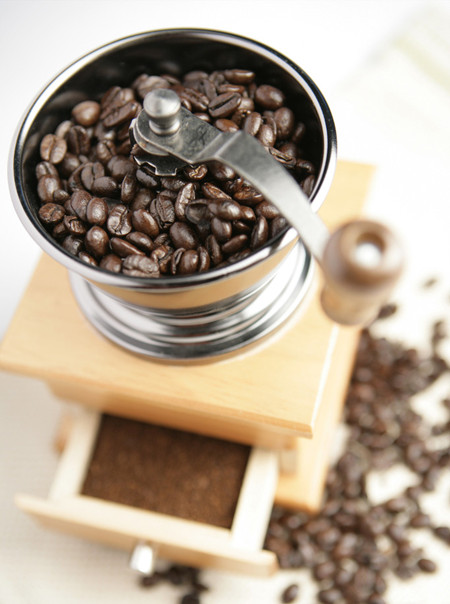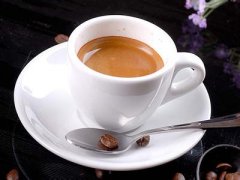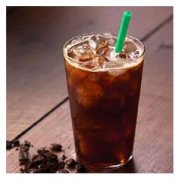Explain in detail how various coffee utensils work in brewing coffee.

1. Working principle of drip coffee machine
When the power is turned on and the switch is turned on, the indicator light is on and the heating tube starts to work. When there is no water in the tank, the temperature rises. When the temperature rises to a certain temperature, the thermostat is disconnected and the heating tube stops working. When the temperature begins to drop, the thermostat is restored and the heating tube continues to work to achieve heat preservation.
2. Working principle of high pressure steam coffee machine
The coffee pot has a high-pressure chamber, and when the water begins to produce a large amount of steam, the pressure in the high-pressure chamber is greater than the atmospheric pressure, so the water rises along the pipe and flows into the coffee filter under the action of steam pressure in the chamber. the coffee seeping from the bottom flows into the coffee cup. There is a safety valve at the top of the high pressure chamber (to ensure safety). Or open the air valve, you can use steam to bubble the milk.
The built-in closed small boiler water tank of this kind of coffee pot mainly relies on the steam produced by water at high temperature to produce coffee. The coffee produced by this kind of product has a stronger flavor than the drip coffee pot and is more suitable for people who have higher requirements for the taste of coffee. This kind of goods generally have the function of beating fresh milk, and you can make "cappuccino" by yourself.
1. Siphon
Step 1, pour hot water into the ball under the glass, bring it to a boil over high heat and wait for the water to boil.
When boiling one cup, add 200 ml of water under the ball, 175 ml when not pouring bottom water, and 350 ml when boiling two cups. After pouring water, wipe the ball under the glass with a dishcloth, otherwise it is easy to break the glass.
Step 2, load the filter into the ball.
Take the filter out of the water and press it dry, hook the filter hook to the bottom of the ball, and then use the adjusting rod to adjust the position of the filter to the middle position.
Step 3, after the water boils, insert the upper ball into the lower ball.
Turn it into a small fire, carefully tilt the ball on the glass into the lower ball, and make sure that the water will not roll too much and spray out, press the ball on the glass slightly straight down and rotate at the same time.
Step 4, add coffee powder after the water rises by half, start stirring, and start timing after stirring.
The amount of each cup is 15 grams, and start the first time of stirring, do not stir around the circle, should draw 3/4 yuan around, press the powder into the water from top to bottom, so that the forces of two different directions collide with each other, do not stir too long, just spread the coffee powder.
Stir for the second time at step 5 and 25 seconds.
Stir for the third time in step 6 and 55 seconds, and turn off the heat in 60 seconds.
When it takes only 50 seconds to brew a cup of coffee (the second time in 20 seconds and the third time in 45 seconds), pull up the upper ball quickly after turning off the heat, pour out the remaining water from the lower ball, and then insert it back into the upper ball. this action is called inverted bottom water. if you don't want to do this step, the water is only 175 grams.
Step 7, wipe the ball under the glass with a wet and cold towel immediately after turning off the fire.
Step 8. When the coffee liquid is filtered to the end, pull up the ball on the glass and don't let the last coffee flow down.
Here is a small string of Belgian coffee pots: although its operation principle is the same as siphon coffee, it is very simple! Hey
Step 1: add the required amount of water to the metal pot, share about 350CC for two, and cover tightly.
Step 2, put about 30g of coffee powder into a glass pot at the other end.
Step 3, lift the metal pot, open the lid of the alcohol lamp, jam the alcohol lamp cover with the metal pot, and light the alcohol lamp.
Step 4, when the water is heated, the hot water flows into the glass pot along with the siphon to come into contact with the coffee powder. Once the water in the metal pot becomes less and less, the weight becomes lighter and lighter, finally the alcohol lamp lid bounces off, and the metal pot is no longer heated and cooled. The coffee is separated from the coffee grounds through a filter at one end of the siphon, and the water is slowly sucked back from the glass pot.
Step 5: turn on the tap and enjoy the delicious coffee!
2. High-pressure type (ha, this is the preferred way of making coffee, because this can fully extract the essence of coffee, and I can't help but want to drink it.)
High pressure, that is, Italian style, originally refers to a high-pressure and fast method of brewing coffee, and later the coffee brewed in this way is also called "Espresso". When brewing coffee in this way, the ground soft powder of the same size is first compacted with a filler. The coffee bean powder in the filter must be strong and tight to form a cake-shaped coffee block to resist the hot water pressure of 8~9bar when brewing. Hot water under strong pressure, looking for a way to soak the coffee block, when the coffee block filling pressure is closely consistent, each coffee bean powder can be extracted evenly by hot water, complete into the cup, instantly get a small cup of rich and aromatic espresso, whether the pressure and resistance can achieve a balanced symmetry, is an indispensable important factor to brew a cup of thick and delicious Espresso coffee.
Because Espresso is under the pressure of 8~9bar, forcing hot water to pass through coffee powder quickly, the extraction time of each cup of coffee only takes about 25 to 30 seconds, saving a lot of time and cost, because the time for water to pass through coffee powder is very short, so the grinding scale needs to be meticulous and stable.
In order to get good grinding quality, a good bean grinder is indispensable, because it is only possible to get a good cup of coffee by using a bean grinder with fast cutting, slow temperature rise, uniform fine density and fresh coffee beans.
A good cup of Espresso coffee should be strong but not too bitter. With milk and milk foam, you can get a cup of fragrant milk coffee (Latte or Cappuccino). Mellow Espresso and fine milk foam attract the majority of consumers in a short time, creating a booming coffee market! Would you like a drink? Ho ho ho.
The following are several high-pressure coffee machines used by simple white coffee makers: mocha pot, Italian semi-automatic coffee machine and full-automatic coffee machine
Mocha pot (this is a classic)
Step 1, select Espresso-specific coffee beans, which need to be ground more finely than American coffee, but not to the extent of the powder, which is still granular. If the coffee is ground too fine, the coffee powder will penetrate the metal filter, leaving residue, and cause excessive extraction and too bitter, too astringent, if the grinding is too coarse, the hot water passes through the coffee too quickly and the extraction is not enough.
Step 2. Put an appropriate amount of hot water at the bottom of the mocha pot (usually the amount of a cup of Espresso will not exceed 60 grams).
Step 3, put the coffee powder in the middle of the mocha pot, in a funnel-shaped container, the dosage of each cup is about 8 or 9 g, spread the coffee powder flat, squeeze it slightly, but do not press it too closely, and then put it into the pot.
Step 4: tie the upper seat of the mocha pot to the lower seat completely to ensure that the water does not ooze from the middle when boiling, and then heat the mocha pot from the bottom, which you can hold by hand or on a special shelf, which is heated by an alcohol lamp or gas stove until the water boils and flows to the upper seat.
This is a very suitable method for individuals to use, but its disadvantage is that it is easy to have residue, but now a special round filter paper can be bought on the market. This kind of filter paper can be placed between the coffee powder and the upper seat filter to improve the situation. Another point is that the pressure it produces is not enough, so the coffee made can not be called Espresso.
Semi-automatic Italian coffee machine
The so-called semi-automatic means that the filling of coffee powder must be operated manually and the rest is controlled by machines. in fact, this is also a key to the whole Italian coffee. In terms of semi-automatic coffee machines, we can be divided into two types: household type and business type. The household types of Cankun are 1817, 1819A, etc.
First, choose Espresso coffee beans and grind them into a finer powder.
Point 2, the weight of each cup is about 8 or 9 g, put it in the brewing machine on average, press the coffee powder with a filler, rotate it about 1 inch 4 times at the same time, apply the force as evenly as possible, and tap the edge of the brewer with a filler, knock down the powder attached to the edge, and then fill it until the coffee powder is pressed flat.
The final key to the success or failure of a cup of espresso is whether the coffee powder can be filled evenly and properly. Like the mocha pot in front, the pressure is too strong, so that the hot water is not easy to pass through, and the extraction time is too long, which makes the coffee too bitter. The pressure is loose, and the hot water will directly run through the coffee, resulting in insufficient extraction. In addition, this is one of the keys to the emergence of Klima. Therefore, the technical experience of the operator becomes the biggest variable.
The so-called "Krima" Crema refers to the golden foam on top of the Italian coffee Espresso (note: it is not the foam on top of the cappuccino or latte), which is often used as a criterion to judge whether the Italian coffee is fresh and successful.
Point 3, tie the brewer, press the switch, you can judge from the speed of coffee flow, whether the filling of coffee powder is standard or not, if it drips slowly, it means that you fill it too tightly, and if it runs out very quickly, it is too loose.
Fully automatic Italian coffee machine
Fully automatic refers to the supply of water, the temperature of water, the amount of water, the pressure of water, the amount of coffee, the thickness of ground coffee beans, the filling of coffee powder, brewing, and pouring coffee grounds, all of which are automatically controlled by the computer, as long as the computer settings are completed. Button to operate, without involving any technical problems. The full-automatic coffee machine is convenient, fast, consistent in quality, high efficiency, and the operator does not need training. But the structure of the machine is complicated and needs good maintenance.
3. Dripping type
Drip type, that is, American coffee machine. Such as Cankun's 1171, 1027pt, 152B and so on. Simply put, drip type, put filter paper or screen on top of the container, put coarse grinding powder, water is poured in from the top (the skill of adding water is very important), coffee leaks out from below. Three points for attention
Warm cup: also remind all coffee lovers that hot coffee must be drunk while it is hot, it is the most delicious time for coffee. The action of warming the cup can prolong the heat of the coffee, as long as the hot water is injected into the coffee cup, the cup is warm by the temperature of the hot water, and then the hot coffee is poured out and then injected with the hot coffee that has just been brewed, which can help maintain the heat of the coffee and prolong the time to enjoy delicious coffee.
4. Cooking style (this can be regarded as an ash-level practice)
Boil the powder and water directly in Greece or Arabia. You don't have to drink the coffee grounds below. After drinking, someone poured coffee grounds on the table for divination.
5. Cold contraction (it takes a long time and needs to wait patiently. Those who like freshness might as well give it a try. Watching coffee dripping through strings of glassware slowly converging into a cup of coffee is also very attractive (* ^ _ ^ *) hee hee.)
Iced coffee. According to the third principle, let the water drop into the coffee powder at a very slow rate, and the coffee is cold throughout the night.
Important Notice :
前街咖啡 FrontStreet Coffee has moved to new addredd:
FrontStreet Coffee Address: 315,Donghua East Road,GuangZhou
Tel:020 38364473
- Prev

The skills of brewing Fine Coffee with filter Coffee
The definition of follicle is to grind the roasted coffee beans into smaller particles, and then dissolve out their water-soluble components, a process commonly known as follicles. The particle size of the relationship between follicles and grinding is stable, which can control the heating and fine particle size to the lowest. The relationship between brewing and water using fresh grinding raw materials 1, water quality 2, H2O 3, hard water and
- Next

Basic knowledge of boutique coffee how to choose a coffee cup
In the face of the dazzling variety of cups on the market, we often don't know how to start. Is there any difference between coffee cups and other cups? Which cup should I use to drink what kind of coffee? When buying cups, most people are often unable to correctly distinguish the difference between coffee cups and black tea cups. Usually, the bottom of the black tea cup is better in order to spread the aroma of black tea and to appreciate the color of black tea.
Related
- Beginners will see the "Coffee pull flower" guide!
- What is the difference between ice blog purified milk and ordinary milk coffee?
- Why is the Philippines the largest producer of crops in Liberia?
- For coffee extraction, should the fine powder be retained?
- How does extracted espresso fill pressed powder? How much strength does it take to press the powder?
- How to make jasmine cold extract coffee? Is the jasmine + latte good?
- Will this little toy really make the coffee taste better? How does Lily Drip affect coffee extraction?
- Will the action of slapping the filter cup also affect coffee extraction?
- What's the difference between powder-to-water ratio and powder-to-liquid ratio?
- What is the Ethiopian local species? What does it have to do with Heirloom native species?

